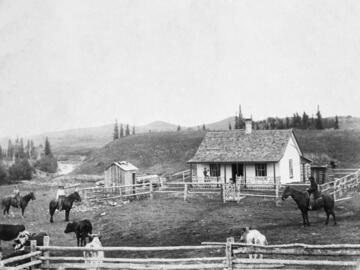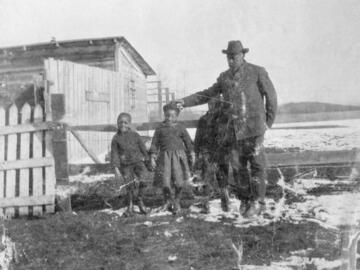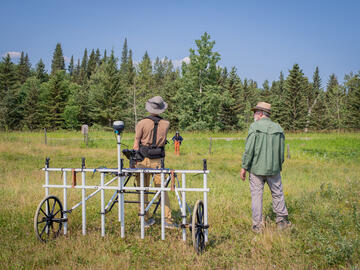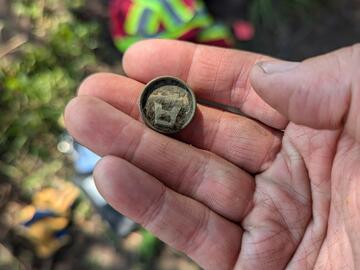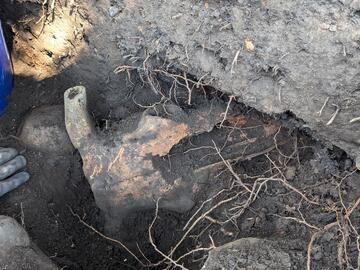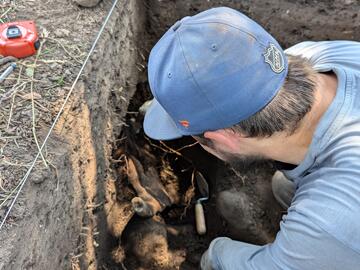July 26, 2024
John Ware's homestead unearthed near Millarville in dig led by UCalgary archeologists

Ware, oh where?
That was just one of the questions facing a University of Calgary archeology team this summer, as they set about learning the truth about an Alberta legend, 137 years after John Ware established his first homestead near Millarville, Alta.
What was a working ranch, anchored by the tiny, hand-built house where the former American slave lived with his wife, Mildred, and four children, is now just rural cow pasture — and for lead archeologist Dr. Lindsay Amundsen-Meyer and her team, the first step was to determine where the Ware house stood.

Lindsay Amundsen-Meyer, lead archeologist of the project from the Faculty of Arts.
Michael Platt, University of Calgary
“For us a feature would be really significant, whether it’s a house foundation or maybe an outhouse or a dump, because people used to throw things down outhouses all the time,” says Amundsen-Meyer, PhD.
“If we could find those, we’d be able to see the kinds of things he was using on a daily basis and get more of a window into his daily life.”
Ware, who was killed in a horse-riding mishap in 1905, was among Alberta’s first non-white settlers. The Black cowboy, emancipated after the American civil war, followed fortune and cattle herds north from Texas to Canada, where he decided to settle.
There are few contemporary accounts of Ware in his lifetime, and his story is built on legends of uncanny skill in taming wild horses and sheer physical strength — proof of the latter being a deep scar in the pasture where he once lived, the remains of an irrigation ditch dug by hand.

The team located what appears to be the foundation and cellar of John Ware’s house.
Michael Platt, University of Calgary
Working alongside Cheryl Foggo, a well-known Calgary author, playwright and director of a 2020 documentary about Ware, Amundsen-Meyer is seeking to learn more about the real man’s life, and what the archeological remnants of his Millarville home might say about his daily existence.
“We get a chance to assess what his daily life looked like instead of only these legends and oral histories,” explains Amundsen-Meyer, assistant professor in the Department of Anthropology and Archaeology at UCalgary’s Faculty of Arts.
The first archeological dig at Ware’s Alberta homestead is a chance to understand how the experience of a minority pioneer might have differed from the immigrant majority starting new lives in this province, says Amundsen-Meyer.
“This project hopes to not only piece together the province’s history but to document the roles minorities played in it,” she says.
“I think as archeologists it's important to study sites representative of diverse histories and heritage so that those stories are represented, as that affects not only our perception of the past but also community identities and relationships today.”
Using a variety of subsurface geophysical and drone-based remote sensing techniques on land previously undisturbed by archeological shovels, Amundsen-Meyer and a team of students and helpers managed to locate what appears to be the foundation and cellar of Ware’s house, which was roughly the size of a modern master bedroom.
As well as square building nails and horseshoe nails, the team found fragments of ceramic dinnerware, a thick glass bottle, and what appears to be the clasp from a bolo tie.
At the bottom of what is believed to be the home’s cellar, the skull of a cow was found.
For Amundsen-Meyer, the three-day dig is hopefully just the start, and she’s hoping their success leads to further funding and a return to the privately owned land next summer.
“I think I have more questions than I started with now, but that just means we need to go back,” says Amundsen-Meyer.

